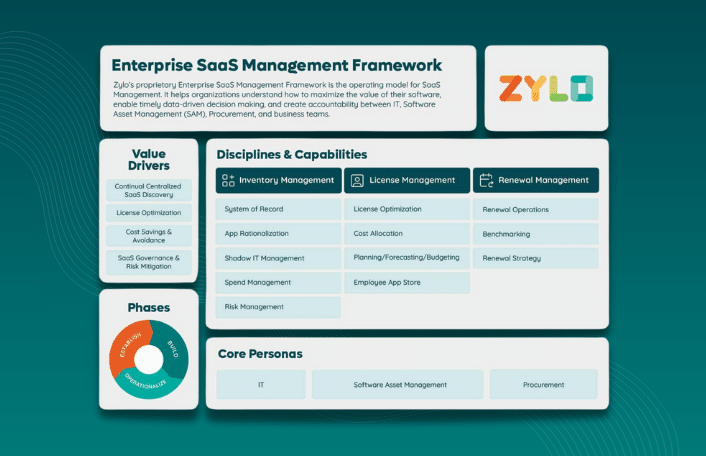
Drive Business Value with The Enterprise SaaS Management Framework
Table of Contents ToggleWhat Does It Mean to Evangelize SaaS Management?How...
Back
Back
Search for Keywords...
Blog

Table of Contents
What’s the secret to unlocking the full potential and value of SaaS Management? It’s you, the cross-functional team, with your unique expertise and contributions from IT, Software Asset Management, Finance, and Procurement. Your alignment and collaboration are the key.
Without alignment from the start, these teams end up working in silos. The result is that SaaS will continue to proliferate without the proper visibility and governance.
For instance, IT may successfully reclaim unused licenses and avoid purchasing more. But if they aren’t working with Procurement, they won’t have visibility into the renewal date to ensure timely reclamations. Likewise, Procurement won’t have the information they need to rightsize and convert that cost avoidance into actual cost savings.
Because SaaS Management is a program – not a one-time project – ongoing stakeholder commitment is vital. By evangelizing your program across the organization, you can remove silos. Here’s how.
At its core, evangelizing SaaS Management means communicating the program’s value and importance across your organization. It’s not just about IT or Procurement managing their respective tasks; it’s about fostering a shared understanding that SaaS Management affects the entire business.
To successfully evangelize SaaS Management, you’ll need to:
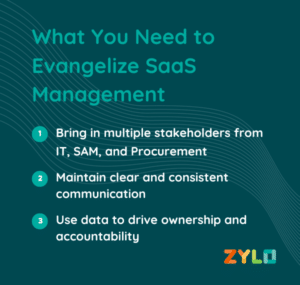
Evangelizing SaaS Management requires a strategic approach that brings key stakeholders together, establishes clear roles, and ensures ongoing communication and collaboration. By aligning teams such as IT, Software Asset Management (SAM), and Procurement, you can break down silos and drive value for your business.
When stakeholders don’t fully understand their roles or how they contribute to the program’s goals, it can lead to friction and organizational silos. To avoid these issues, establish clear responsibilities from the outset.
Key stakeholders typically include IT, SAM, and Procurement, but it’s essential to recognize that the entire business plays a role in SaaS Management. Decisions regarding purchasing, budgeting, and application rationalization impact teams across the company, making their involvement critical. Other stakeholders could include department heads, end-users, and finance managers.
“In the early stages of establishing a SaaS Management program, it’s critical to engage not just the immediate Procurement team but also IT, Finance, and the actual users of the software. It’s a trifecta that covers all perspectives, which is fundamental for a well-rounded strategy.”
– Brett Bartolai, Head of Procurement, North America at GrubHub
Here’s how each team contributes to SaaS Management:
To ensure SaaS Management stays top of mind and stakeholders understand how your program is driving business value, it’s essential to communicate clearly, consistently, and with transparency. Without a structured communication cadence, key updates and progress can easily be overlooked.
Establishing a regular communication schedule is critical to breaking down organizational silos. For executives, that could mean monthly or quarterly updates, while practitioners and those involved in the day-to-day may benefit from weekly or biweekly touchpoints. This cadence ensures everyone remains aligned on the program’s goals and progress. It could include regular meetings, email updates, or a shared dashboard for tracking progress.
Here are a few important factors to consider:
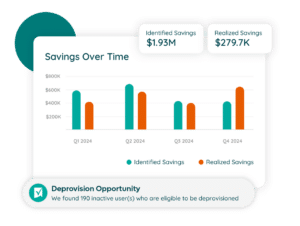 Broadcast wins regularly: Highlighting the wins driven by SaaS Management helps build momentum and excitement. Sharing ongoing business value reinforces the program’s importance and supports continued investment in it.
Broadcast wins regularly: Highlighting the wins driven by SaaS Management helps build momentum and excitement. Sharing ongoing business value reinforces the program’s importance and supports continued investment in it.Maintaining consistent and transparent communication ensures that SaaS Management remains a priority and stakeholders are continuously engaged.
Data is critical for evangelizing SaaS Management and ensuring that stakeholders take ownership and accountability. When presented clearly, data helps align teams, fosters collaboration, and validates the ongoing investment in SaaS Management.
“The most effective data points when garnering support for SaaS Management strategies are cost analysis, user adoption rates, and vendor performance metrics,” explained Bartolai. “Demonstrating the tangible financial benefits and productivity enhancements resonates well across departments, helping to solidify support for the initiative.”
Centralizing your SaaS data within a SaaS Management Platform gives each stakeholder easy access to the data that matters most to them. This holistic view ensures that SaaS is managed efficiently, and teams can collaborate more effectively.
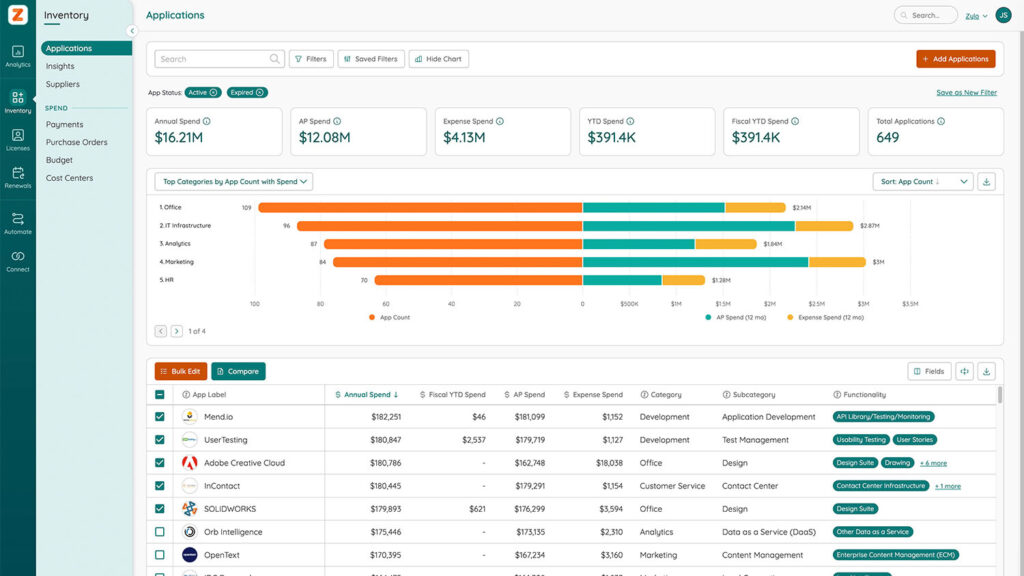
One way to ensure data drives accountability is using customized dashboards tailored to stakeholder needs. These dashboards offer real-time visibility into key metrics, helping teams make informed decisions and measure progress. By giving each department the tools it needs to track performance, you empower them to take ownership of their role in the SaaS Management process.
Zylo was purpose-built for IT, Software Asset Management, and Procurement teams to work together seamlessly—whether managing spend and risk, optimizing SaaS licensing, or keeping up with renewals. By centralizing SaaS data in one platform, Zylo ensures that every team has the visibility and tools they need to drive collaboration and accountability.
Ready to start evangelizing SaaS Management across your organization? Discover how Zylo’s solutions can help break down departmental silos and maximize the value of your SaaS investments.

Table of Contents ToggleWhat Does It Mean to Evangelize SaaS Management?How...
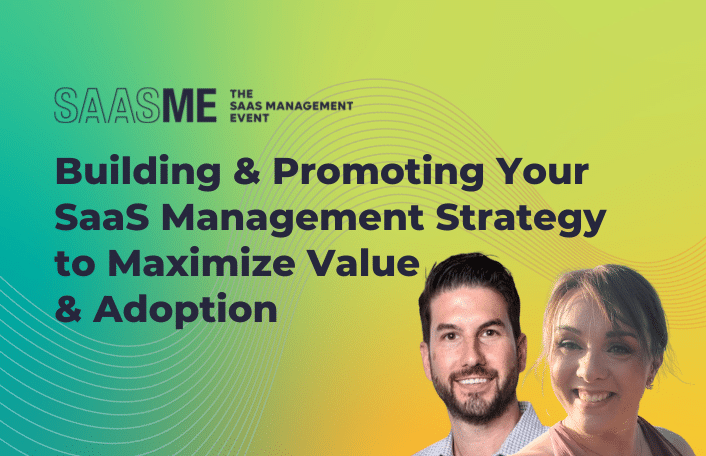
Table of Contents ToggleProcurement’s Role in Building A SaaS Management ProgramWhen...

Table of Contents ToggleWhat Does It Mean to Evangelize SaaS Management?How...

Table of Contents ToggleWhy SaaS Usage Metrics Matter More Than EverThe...
| Cookie | Duration | Description |
|---|---|---|
| cookielawinfo-checkbox-analytics | 11 months | This cookie is set by GDPR Cookie Consent plugin. The cookie is used to store the user consent for the cookies in the category "Analytics". |
| cookielawinfo-checkbox-functional | 11 months | The cookie is set by GDPR cookie consent to record the user consent for the cookies in the category "Functional". |
| cookielawinfo-checkbox-necessary | 11 months | This cookie is set by GDPR Cookie Consent plugin. The cookies is used to store the user consent for the cookies in the category "Necessary". |
| cookielawinfo-checkbox-others | 11 months | This cookie is set by GDPR Cookie Consent plugin. The cookie is used to store the user consent for the cookies in the category "Other. |
| cookielawinfo-checkbox-performance | 11 months | This cookie is set by GDPR Cookie Consent plugin. The cookie is used to store the user consent for the cookies in the category "Performance". |
| viewed_cookie_policy | 11 months | The cookie is set by the GDPR Cookie Consent plugin and is used to store whether or not user has consented to the use of cookies. It does not store any personal data. |
